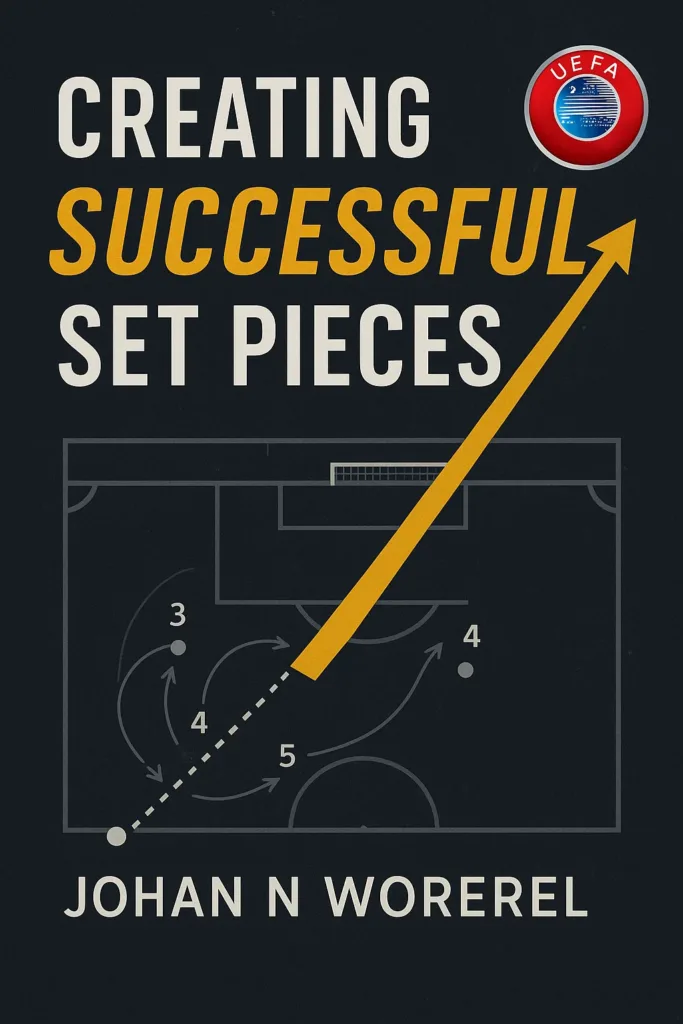
Creating Successful Set Pieces: The Ultimate Coaching Guide
Introduction: The Game Within the Game
In modern football, where margins of victory are increasingly narrow, set pieces have evolved from a mere restart to a critical strategic weapon. They represent a structured opportunity to score or prevent a goal in an otherwise chaotic and open game. Consequently, dedicated investment in set-piece design and execution is no longer optional for any ambitious team; it is a fundamental pillar of a winning strategy. This article serves as a comprehensive guide for coaches, breaking down the process of creating successful set pieces into a actionable framework, from initial analysis to on-pitch execution. We will explore the key principles for both attacking and defending, providing the blueprint to turn dead-ball situations into a consistent source of points.
For a foundational understanding of coaching methodology that applies directly to set plays, the UEFA B License Coaching Manual PDF is an essential starting point.
The Strategic Imperative: Why Set Pieces Matter
Firstly, the numbers speak for themselves. A significant percentage of goals at all levels of football come from set pieces. Beyond the statistics, they offer a controlled environment to impose a pre-rehearsed tactical advantage. Furthermore, a dominant set-piece performance provides a psychological boost, demoralizing the opposition and boosting your own team’s confidence. Ultimately, excellence in this phase of play is a powerful testament to a team’s organization, discipline, and coaching acuity.
The Four Pillars of Attacking Set Pieces
Creating goal-scoring opportunities from dead balls requires a methodical approach built on four key pillars.
1. Meticulous Analysis and Opponent Profiling
Before designing a single play, you must understand your opponent. Analyze their defensive set-up: Do they prefer zonal or man-marking? Who are their weakest defenders in the air? Who is the goalkeeper, and what are their tendencies? This intelligence-led approach allows you to identify and exploit specific vulnerabilities.
2. Innovative Design and Strategic Routines
Gone are the days of simply lofting the ball into the mixer. Modern set pieces are about deception, misdirection, and creating overloads in key areas. This involves:
- Blocking: Using offensive players to legally impede defenders and free up a teammate.
- Decoy Runs: Creating movement that pulls the defensive structure out of position.
- Varied Delivery: Utilizing different types of serves (in-swinging, out-swinging, driven, lofted) to attack specific zones.
- Second Ball Strategies: Planning for where the ball will drop after the initial contact to maintain pressure.
The design process is a core component of advanced coaching courses, such as those detailed in the UEFA A Licence: The Complete Coach’s Guide PDF.
3. Precision in Delivery and Execution
The most ingenious routine is useless without consistent delivery. The kicker must be able to execute the required service with precision, under pressure, time and again. This requires dedicated technical training. Similarly, attackers must time their runs perfectly and execute their movements with conviction. This level of precision is honed through repetitive practice found in structured Soccer Training Programs.
4. Relentless Repetition and Muscle Memory
Ultimately, success is built on the training ground. Players must rehearse routines until their movements become automatic. This builds the muscle memory and understanding required to execute under the intense pressure of a match. Drills should progress from unopposed walk-throughs to fully opposed scenarios, replicating game intensity.
The Defensive Foundation: Neutralizing the Threat
A successful set-piece strategy is equally defined by a team’s ability to defend them. The principles are built on organization, communication, and aggression.
- Clear Organizational Structure: Decide on a system (e.g., zonal, hybrid, man-marking) and ensure every player knows their role and area of responsibility.
- Goalkeeper Command: The goalkeeper must be the loudest organizer, commanding their area and directing the defensive line.
- Agressive Mentality: Defenders must attack the ball with conviction, prioritizing powerful headers to clear the danger.
- Planning for the Second Ball: As in attack, defending doesn’t stop at the first header. Teams must be organized to react and clear subsequent rebounds.
These defensive principles are a crucial part of a team’s overall tactical identity, as explored in resources like the Principles of Play: Attacking PDF, which also covers defensive transitions.
From Theory to Practice: Implementing Your Routines
Implementing this strategy requires a structured plan. Dedicate specific time in your The Training Plan for set-piece rehearsal. Furthermore, begin with technical work on delivery from the Warm-Up Exercises with Ball PDF library.
Then, move to phase-of-play drills. Use a resource like UEFA A Coaching Session Plans to design sessions that isolate corner kicks, free-kicks, and throw-ins. Start without opposition to coach the movement patterns, then gradually add defenders until the drill is fully opposed. Finally, integrate set-piece scenarios into your small-sided games, using exercises from 60 Training Games PDF to create realistic pressure.
Conclusion: Mastering the Decisive Moment
In conclusion, successful set pieces are not a product of luck; they are the result of meticulous analysis, creative design, relentless repetition, and disciplined execution. They are a direct reflection of a coaching staff’s preparation and a team’s concentration. In an era where games are often decided by a single goal, mastering these decisive moments can define a season.
The commitment to this level of detail is what separates elite clubs, as seen in the academy methodologies of the Leicester City Football Club Academy PDF. To develop this expertise, coaches are encouraged to pursue advanced education through courses like the UEFA Pro License Course PDF or the AFC B Diploma Coaching Course Certificate PDF.
For continuous learning, follow the work of set-piece specialists and analysts on @TheAthleticFC and delve into the vast tactical library at The Coaches’ Voice. Remember, by investing time in creating successful set pieces, you are not just adding plays to a book; you are building a robust, reliable system that will win you crucial points and elevate your team’s performance to new heights.
